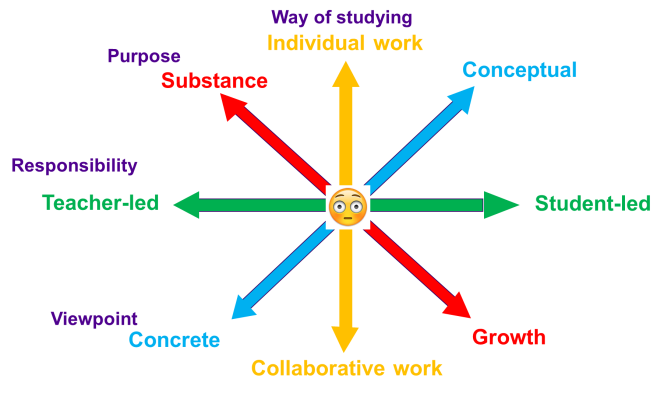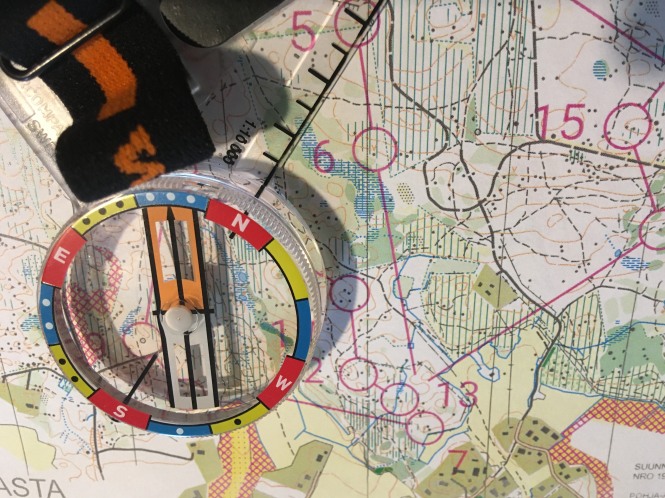Dear blog and readers,
During the last two weeks, we have discussed collaborative learning from many viewpoints in our PBL group. I have enjoyed the discussions and it has been interesting to learn from other teachers who come from different countries and different learning environments. Surprisingly, the challenges and opportunities of collaborative learning seem to be quite similar regardless of the teachers’ background. Maybe this ONL course has also attracted teachers who are interested in collaborative online learning and therefore share similar kind of thinking.
Six years ago, just before starting full-time teaching at TAMK, I took my first online course dealing with collaborative learning communities. It was very important course for my development as a teacher. It offered me modern pedagogical approach and tools, which I could practice even in classroom teaching, because I had no online courses then. For instance, I used blogs for various purposes and got positive feedback from the students. On the master’s level courses I used the metaphor of “campfire meeting” for contact teaching, meaning that we gathered around the learning subject to discuss it in the classroom. During these six years, the design of my courses has become more sophisticated and moved more and more online. For several years, I have also been teaching an online course targeted to other teachers with the title “how to design an online course”.
However, in the Autumn 2019, I had reached the point where I needed some further education myself and got the chance to participate this ONL course. So far, this has been collaborative learning at it’s best. I have also got some new ideas to try out on my courses, and I have got access to wonderful resources about collaborative online learning. For instance, collaboratively used FISh document seems to be a powerful tool and the bi-weekly structure seems to be a good backbone for course design.
Sources of confusion with collaborative learning
In this blog post, I will focus on the sources of possible confusion caused by an unfamiliar pedagogical approach that new online learners and teachers may have to face on collaborative online courses. This reflection is based on a narrative research done among the first-year business students in 2016 after the renewal of the curriculum. It is not exactly about online learning, but it is about collaborative learning anyway. The BBA students started their studies in PBL groups of about eight students in each group. The groups were formed by the teachers by using the principle to create as diverse groups as possible.
After about three months of studying, the students started to experience dissatisfaction towards their studies and teacher coaches and their small groups. This can be considered quite normal behavior in group development and how people normally react on changes. However, at the end of the first semester there was also a research conducted among the students and the teacher coaches. Most of the students participated and we got valuable data about students’ experience of collaborative learning, as they we mostly used to individual learning during the high school. I think this research is even more relevant when applied to collaborative online courses.
The researcher, Dr. Harri Kukkonen (2018), found out that the students shared two kinds of narratives. Engagement narratives included the students’ experiences of what helped them to cope with their studies, whereas in the alienation narratives, the students described what caused confusion with their studies. Unfamiliar pedagogical approach, including a lot of collaboration in the PBL groups, caused confusion and led the students to an abyss experience. At the time of the research, many of the students were frustrated with their studies and they were resistant to accept the unfamiliar pedagogical approach to their studies. From the students’ narratives, Dr. Kukkonen found four dimensions (Diagram 1) causing the confusion. He built a model describing how right kind of facilitation would help the students forward to successful studies. The correct answer is not to find a static position along the axes. Rather, it is a dynamic system which should be kept in balance. There is not a problem to be solved, rather it can be compared with breathing in and out in a dynamic sequence to keep one alive.
 Diagram 1: The four dimensions of confusion for collaborative studies (Kukkonen 2018)
Diagram 1: The four dimensions of confusion for collaborative studies (Kukkonen 2018)
Who is responsible of your studies?
The first dimension of confusion in the model was about the responsibility of the studies. Should it be the teacher or the student? The students were used to more teacher-led way of studying at the high school, and now they faced a situation where they were encouraged to take a lot of responsibility by themselves. During the first implementation, also the teacher coaches were learning the new approach and possibly wanted the students to assume too much responsibility at the beginning. However, with proper negotiation the balance was found.
I think that in collaborative online studies, the risk of putting too much responsibility to the students is even bigger than in contact teaching. Therefore, the question of responsibility is very likely to cause confusion and alienation from the studies for online students. Proper facilitation by the teacher will help to find an optimum dynamic balance. However, it will require a lot of attention from the teacher.
Are you used to studying by yourself or in in a group?
The second dimension is about the way of studying. Most of the students were used to individual studies. Now the they were asked to do it collaboratively in the small groups. This caused the major confusion and stress, as the students’ grades were dependent on the performance of the other students, too. After learning from this, the teachers put more emphasis on the individual performance and leant to keep the system in balance.
With collaborative online studies, the challenge of keeping balance between individual and collaborative performance is even more important than with contact teaching. I like the way hoe the balance is kept in the ONL course with the bi-weekly structure. There are individual study materials to introduce the subject, a lot of collaborative processing in the PBL group, and both individual and collaborative deliverables.
Do you prefer concrete or conceptual viewpoint?
The third dimension of confusion deals with the viewpoint to the studies. The students may expect concrete cases and solutions, rather than willing to explore concepts and theories related to the subject matters. It is like using the navigator to guide you to the destination, instead of learning to navigate yourself by using the map and compass (Image 1). Of course, concrete cases are needed, but those do not help much when you face completely new and different situations.
 Image 1: Compass on an orienteering map (Photo by Matti Karlsson 2020)
Image 1: Compass on an orienteering map (Photo by Matti Karlsson 2020)
In the ONL PBL group we have also faced this issue to some extent. Our group discussions tend to be very interesting and collaboration at it’s best. Those discussions include also the theoretical viewpoints and are great learning experiences. However, at some point we face the reality of our limited resources and the expected deliverables. It means that we need to come up with concrete solutions and divide the work. However, finding this balance might be a challenge for young online students. They might tend to focus on the deliverables and just share the work instead of deeper collaboration and learning the theories.
Which is more important – to learn the substance or grow and build networks?
The fourth dimension of confusion deals with the purpose of the studies. The students are inclined to think that the major purpose of studying is to learn the substance, which is relevant for their profession. In our degree program, the students do not only learn the substance, but they will also get possibilities for growth and professional development. Even we adults need to grow, it will never end. However, growth is sometimes painful and often not much appreciated. It is quite human that we want quick results, but the growth takes time.
On collaborative online courses, it is even more difficult to deal with the professional development and growth. The expectations of online courses naturally are about learning the subject it deals with. However, on great online courses there should be the possibility to develop the personal learning networks, too. At least for management studies, I think that the higher level the studies are targeted, the more there should be emphasis on growth and networks.
Conclusion
In this blog post I discussed some sources of confusion with collaborative studies. My reflection was based on the research done in our degree program. However, I think this research is even more relevant for collaborative online courses. Learning will always cause some distress and unfamiliar pedagogical approaches may increase the pain. However, identifying the sources of confusion and dealing with those intentionally should improve the learning experience. At last, I am sorry for the Finnish reference. This just was the most relevant for me at this point.
References
Kukkonen H., (2018) Tarinat kertovat – opintoihin kiinnittymisen lähteet ammattikorkeakoulussa